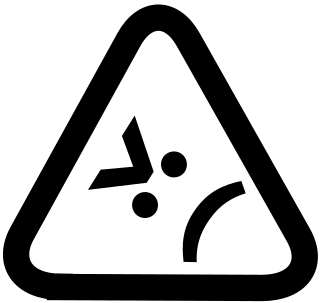
In mass communication, digital media is any communication media that operates in conjunction with various encoded machine-readable data formats. Digital content can be created, viewed, distributed, modified, listened to, and preserved on a digital electronic device, including digital data storage media and digital broadcasting. Digital is defined as any data represented by a series of digits, and media refers to methods of broadcasting or communicating this information. Together, digital media refers to mediums of digitized information broadcast through a screen and/or a speaker. This also includes text, audio, video, and graphics that are transmitted over the internet for viewing or listening to on the internet.

The Internet Archive is an American digital library founded on May 10, 1996, and chaired by free information advocate Brewster Kahle. It provides free access to collections of digitized materials including websites, software applications, music, audiovisual and print materials. The Archive also advocates for a free and open Internet. As of January 1, 2023, the Internet Archive says that it holds more than 38 million print materials, 11.6 million pieces of audiovisual content, 2.6 million software programs, 15 million audio files, 4.7 million images, 251,000 concerts, and over 832 billion web pages in its Wayback Machine. Its mission is to provide "universal access to all knowledge".
Windows Media Video (WMV) is a series of video codecs and their corresponding video coding formats developed by Microsoft. It is part of the Windows Media framework. WMV consists of three distinct codecs: The original video compression technology known as WMV, was originally designed for Internet streaming applications, as a competitor to RealVideo. The other compression technologies, WMV Screen and WMV Image, cater for specialized content. After standardization by the Society of Motion Picture and Television Engineers (SMPTE), WMV version 9 was adapted for physical-delivery formats such as HD DVD and Blu-ray Disc and became known as VC-1. Microsoft also developed a digital container format called Advanced Systems Format to store video encoded by Windows Media Video.

Flickr is an image hosting and video hosting service, as well as an online community, founded in Canada and headquartered in the United States. It was created by Ludicorp in 2004 and was previously a common way for amateur and professional photographers to host high-resolution photos. It has changed ownership several times and has been owned by SmugMug since April 20, 2018.
High-definition video is video of higher resolution and quality than standard-definition. While there is no standardized meaning for high-definition, generally any video image with considerably more than 480 vertical scan lines or 576 vertical lines (Europe) is considered high-definition. 480 scan lines is generally the minimum even though the majority of systems greatly exceed that. Images of standard resolution captured at rates faster than normal, by a high-speed camera may be considered high-definition in some contexts. Some television series shot on high-definition video are made to look as if they have been shot on film, a technique which is often known as filmizing.

Lulu Press, Inc., doing business under trade name Lulu, is an online print-on-demand, self-publishing, and distribution platform. By 2014, it had issued approximately two million titles.
Digital distribution, also referred to as content delivery, online distribution, or electronic software distribution, among others, is the delivery or distribution of digital media content such as audio, video, e-books, video games, and other software.

Open Library is an online project intended to create "one web page for every book ever published". Created by Aaron Swartz, Brewster Kahle, Alexis Rossi, Anand Chitipothu, and Rebecca Malamud, Open Library is a project of the Internet Archive, a nonprofit organization. It has been funded in part by grants from the California State Library and the Kahle/Austin Foundation. Open Library provides online digital copies in multiple formats, created from images of many public domain, out-of-print, and in-print books.

Extended Copy Protection (XCP) is a software package developed by the British company First 4 Internet and sold as a copy protection or digital rights management (DRM) scheme for Compact Discs. It was used on some CDs distributed by Sony BMG and sparked the 2005 Sony BMG CD copy protection scandal; in that context it is also known as the Sony rootkit.
The open music model is an economic and technological framework for the recording industry based on research conducted at the Massachusetts Institute of Technology. It predicts that the playback of prerecorded music will be regarded as a service rather than as individually sold products, and that the only system for the digital distribution of music that will be viable against piracy is a subscription-based system supporting file sharing and free of digital rights management. The research also indicated that US$9 per month for unlimited use would be the market clearing price at that time, but recommended $5 per month as the long-term optimal price.

Defective by Design (DBD) is a grassroots anti-digital rights management (DRM) initiative by the Free Software Foundation (FSF) and CivicActions. Launched in 2006, DBD believes that DRM makes technology deliberately defective, negatively affects digital freedoms, and is "a threat to innovation in media, the privacy of readers, and freedom for computer users." The initiative regularly campaigns against the use of DRM by the media industry and software industry to increase awareness of the anti-DRM movement and pressure industries into no longer using DRM. They are known for their use of hazmat suits in their demonstrations.

A digital media player is a type of consumer electronics device designed for the storage, playback, or viewing of digital media content. They are typically designed to be integrated into a home cinema configuration, and attached to a television or AV receiver or both.
The Protected Media Path is a set of technologies creating a "Protected Environment," first included in Microsoft's Windows Vista operating system, that is used to enforce digital rights management protections on content. Its subsets are Protected Video Path (PVP) and Protected User Mode Audio (PUMA). Any application that uses Protected Media Path in Windows uses Media Foundation.
Amazon Music is a music streaming platform and online music store operated by Amazon. As of January 2020, the service had 55 million subscribers.
The analog hole is a perceived fundamental and inevitable vulnerability in copy protection schemes for noninteractive works in digital formats which can be exploited to duplicate copy-protected works using analog means. Once digital information is converted to a human-perceptible (analog) form, it is a relatively simple matter to digitally recapture that analog reproduction in an unrestricted form, thereby fundamentally circumventing any and all restrictions placed on copyrighted digitally distributed work. Media publishers who use digital rights management (DRM), to restrict how a work can be used, perceive the necessity to make it visible or audible as a "hole" in the control that DRM otherwise affords them.
Digital rights management (DRM) is the management of legal access to digital content. Various tools or technological protection measures (TPM) like access control technologies, can restrict the use of proprietary hardware and copyrighted works. DRM technologies govern the use, modification and distribution of copyrighted works and of systems that enforce these policies within devices. DRM technologies include licensing agreements and encryption.

QRpedia is a mobile Web-based system which uses QR codes to deliver Wikipedia articles to users, in their preferred language. A typical use is on museum labels, linking to Wikipedia articles about the exhibited object. QR codes can easily be generated to link directly to any Uniform Resource Identifier (URI), but the QRpedia system adds further functionality. It is owned and operated by a subsidiary of Wikimedia UK (WMUK).
Always-on DRM or always-online DRM is a form of DRM that requires a consumer to remain connected to a server, especially through an internet connection, to use a particular product. The practice is also referred to as persistent online authentication. The technique is meant to prevent copyright infringement of software. Like other DRM methods, always-on DRM has proven controversial, mainly because it has failed to stop pirates from illegally using the product, while causing severe inconvenience to people who bought the product legally due to the single point of failure it inherently introduces.
PhotoDNA is a proprietary image-identification and content filtering technology widely used by online service providers.
An online video platform (OVP) enables users to upload, convert, store, and play back video content on the Internet, often via a private server structured, large-scale system that may generate revenue. Users will generally upload video content via the hosting service's website, mobile or desktop application, or other interfaces (API), and typically provides embed codes or links that allow others to view the video content.









